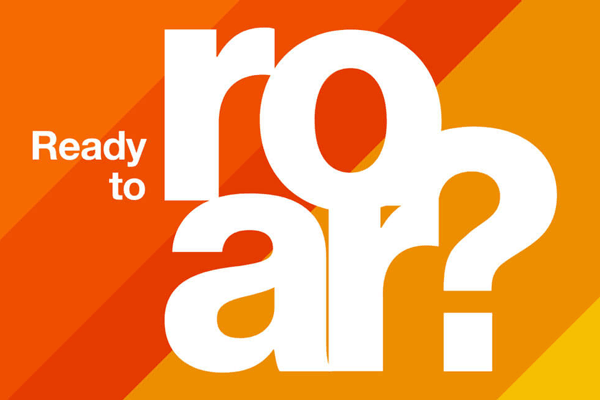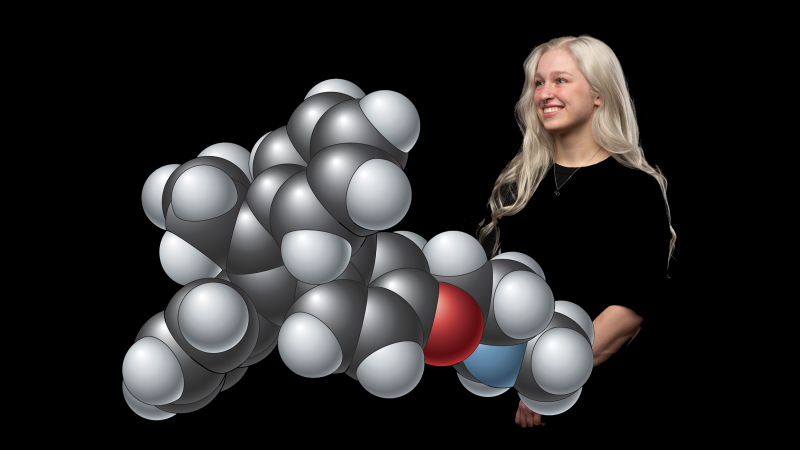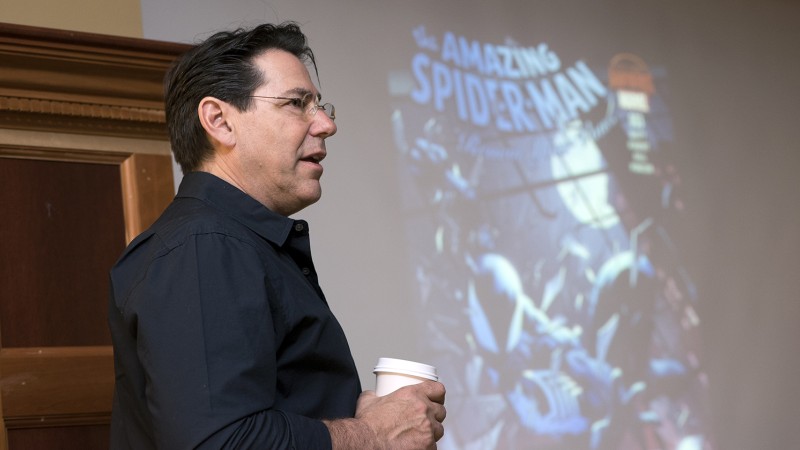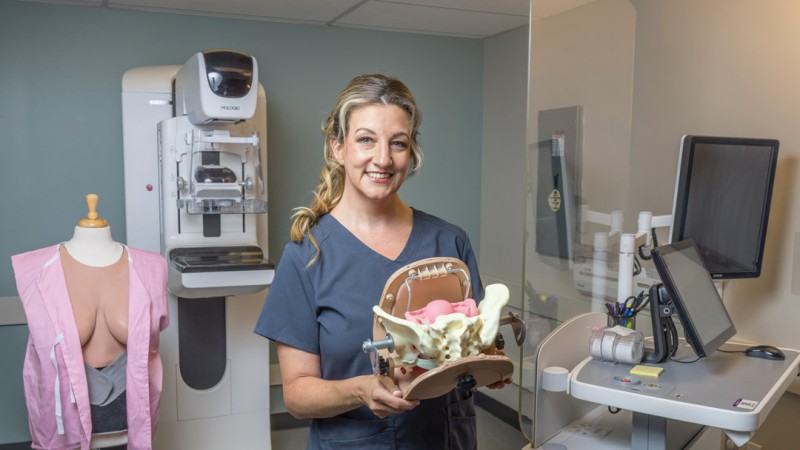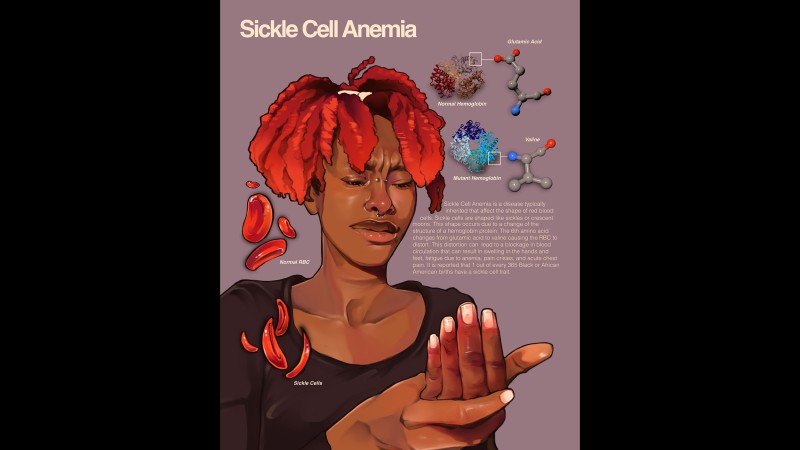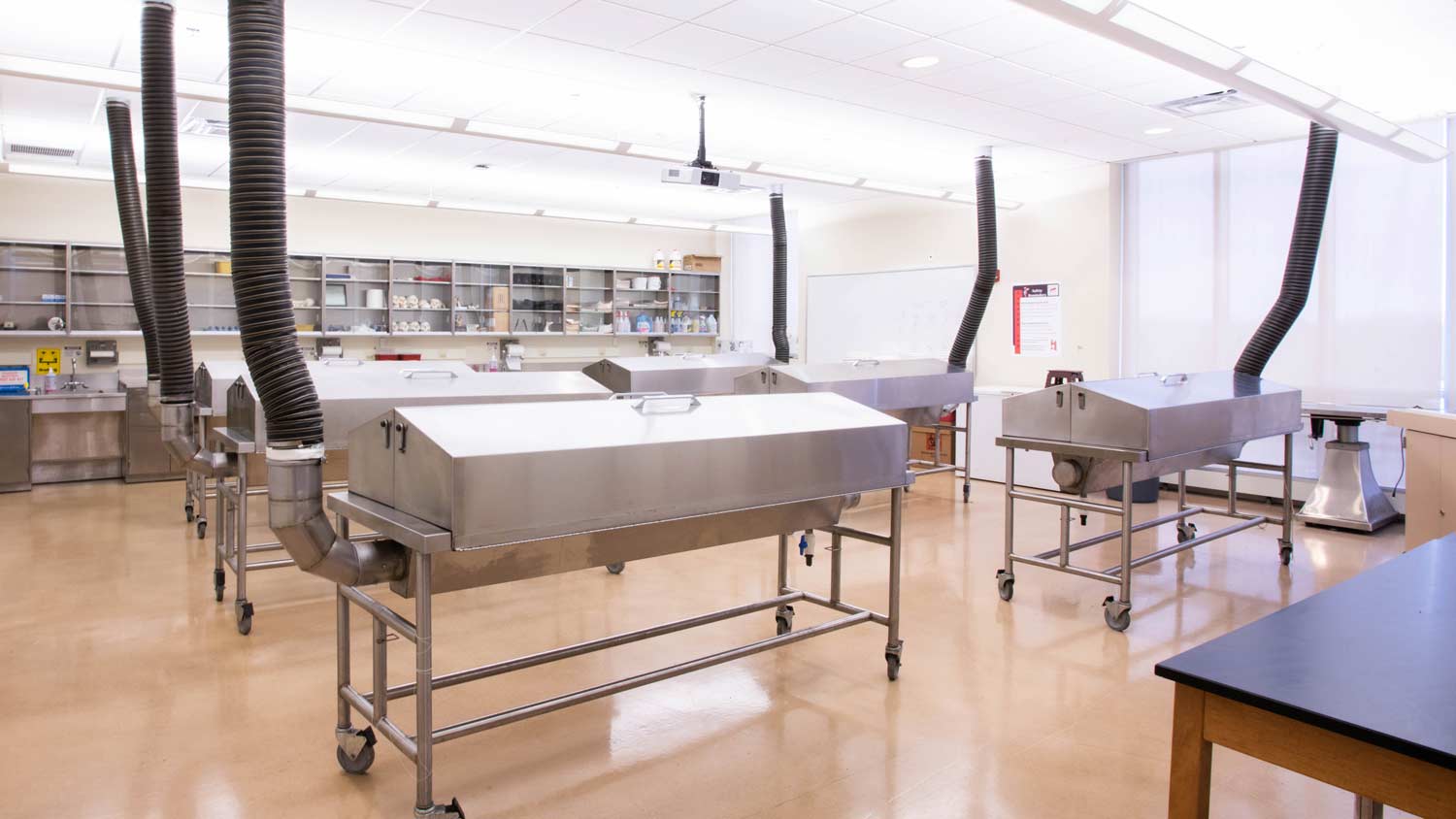Medical Illustration Bachelor of Fine Arts Degree

Medical Illustration
Bachelor of Fine Arts Degree
- RIT /
- Rochester Institute of Technology /
- Academics /
- Medical Illustration BFA
Overview for Medical Illustration BFA
Why Study Medical Illustration at RIT
Industry Work Experience: In collaboration with local hospitals, you will draw from direct observation of surgical procedures and medical treatments in progress
Portfolio Preparation Workshop: Participation in the annual Pre-College Portfolio Preparation Workshop.
What is a Medical Illustrator?
A medical illustrator is a professional artist with advanced education in the sciences (biology, human anatomy, physiology) and in art and design (illustration, 2D/3D/4D digital design, animation, interactive media). They are skilled in creating art that illustrates the things we often cannot see (internal organs of a body, cells and molecules, muscle tissues and tendons) or that need deeper explanation (how a surgery takes place, the inner workings of the human body, how a disease progresses).
RIT’s Medical Illustration BFA
This medical illustration major prepares you to work with scientists, physicians, surgeons, researchers, and other medical specialists to take complex scientific information and distill it into visual images that can be used in a wide range of applications, such as:
- Textbooks
- Brochures
- Infographics
- Interactive models
- 2D and 3D animations
- Motion graphics
- Courtroom exhibits
- Digital presentations
- Educational material
During the first two years of the Medical Illustration undergraduate program, you will focus on developing your drawing and traditional illustration skills. During this time, you’ll attend human biology, anatomy, and physiology classes.
Building on this foundation of science courses, the third and fourth years of the major emphasize 2D and 3D computer illustration and animation. As a third and fourth-year student, you’ll:
- Attend Human Gross Anatomy, a course that includes full head-to-toe dissection in RIT’s Cadaver Lab, one of the few undergraduate cadaver labs in the nation.
- Collaborate with area hospitals to draw from direct observation of in-progress surgical procedures and medical treatments in progress
The medical illustration degree explores all aspects of health care, from the molecular level through the macroscopic and into the theoretical.
Throughout your coursework, you may select elective courses that enhance your studies or enable you to pursue an area of personal or professional interest.
Refine Your Medical Illustration Portfolio
The medical illustration degree requires studio art experience and a portfolio of original artwork.
- View the portfolio requirements
- RIT’s School of Art offers an annual Pre-College Portfolio Preparation Workshop. This two-week visual arts class is designed to help prepare the portfolios of rising high school juniors and seniors for admission to college art programs.
Furthering Your Education in Medical Illustration
Combined Accelerated Bachelor's/Master's Degrees
Today’s careers require advanced degrees grounded in real-world experience. RIT’s Combined Accelerated Bachelor’s/Master’s Degrees enable you to earn both a bachelor’s and a master’s degree in as little as five years of study, all while gaining the valuable hands-on experience that comes from co-ops, internships, research, study abroad, and more.
+1 MBA: Students who enroll in a qualifying undergraduate degree have the opportunity to add an MBA to their bachelor’s degree after their first year of study, depending on their program. Learn how the +1 MBA can accelerate your learning and position you for success.
Graduate Study in Medical Illustration
RIT offers a medical illustration MFA. This is an advanced scientific illustration program and one of only five medical illustration programs at the graduate level in North America, and the only program in the northeast. The two-year program culminates with the production of a thesis project, which requires extensive background research and an original body of art and design work on a complex medical topic.
-
Join Us for Accepted Student Open House
Visit campus on March 28 or April 11 to meet faculty, tour campus, and ask your questions.
-
Apply for Fall 2026
First-year students can apply for Early Decision II by Jan. 1 to get an admissions and financial aid assessment by mid-January.
Careers and Experiential Learning
Typical Job Titles
| Multimedia Artist | Medical Illustrator | Exhibitor |
| Freelance Medical Illustrator | 2D/3D Medical Animator | 3D Computer Modeler/Animator |
| Medical Interactive/Interface Designer | Medical Web Designer | Medical-Legal Illustrator/Litigation Support Specialist |
| Medical Book/Texts Illustrator | Information Graphics Illustrator | Medical Editorial Illustrator |
| Medical Model Designer | Prosthesis Designer/Anaplastologist | Forensics Illustrator |
| Ophthalmologic Illustrator | Medical Illustration Educator |
Industries
-
Journalism, Media, and Publishing
-
Performing and Fine Arts
-
Health Care
Cooperative Education and Internships
What’s different about an RIT education? It’s the career experience you gain by completing cooperative education and internships with top companies in every single industry. You’ll earn more than a degree. You’ll gain real-world career experience that sets you apart. It’s exposure–early and often–to a variety of professional work environments, career paths, and industries.
Co-ops and internships take your knowledge and turn it into know-how. An art and design co-op provides hands-on experience that enables you to apply your artistic capabilities in dynamic professional settings while you make valuable connections between classwork and real-world applications.
Cooperative education, internships, and other experiential learning opportunities are encouraged for students in the BFA in medical illustration.
Creative Industry Days
Connect with Design Industry Leaders
RIT’s Office of Career Services and Cooperative Education hosts Creative Industry Days, which connects students majoring in art, design, film and animation, photography, and select computing majors with companies, organizations, creative agencies, design firms, and more. Creative Industry Days are a series of events that allow you to network with company representatives and interview directly for open co-op and full-time employment positions.
Featured Work and Profiles
-
Profile: Ashley Mastin '21
Ashley Mastin parlayed her experience in RIT's Medical Illustration program into becoming a scientific illustrator for Science magazine.
Read More about Profile: Ashley Mastin '21 -
Marvel-ous Artist
Adam Kubert Adam Kubert '81 (medical illustration) has used his super drawing talent to make a successful career as a comic artist, working for DC Comics and now exclusively Marvel Comics.
Read More about Marvel-ous Artist -
RIT Alumni Is Revolutionizing Breast Cancer Screening Education
Erica McCarthy '03 (medical illustration), is the founder of Bloom Medical Simulation, which developed MammoVest. The first anatomically accurate mammography training tool was designed to improve...
Read More about RIT Alumni Is Revolutionizing Breast Cancer Screening Education -
Medical Illustration Labs
Step into some of the medical illustration labs at RIT, where students take complex scientific and medical information and distill it into stunning visual images.
Read More about Medical Illustration Labs -
Association of Medical Illustrators Award of Merit
May Jiang An animation visualizing the interconnectedness between different biological structures that was created by May Jiang ‘24 (medical illustration) received notable recognition from the Association of...
Read More about Association of Medical Illustrators Award of Merit -
Medical Illustration Senior Showcase - 2023
An online exhibition of work by 2023 medical illustration BFA seniors and MFA candidates.
Read More about Medical Illustration Senior Showcase - 2023
Curriculum for 2025-2026 for Medical Illustration BFA
Current Students: See Curriculum Requirements
Admissions and Financial Aid
First-Year Admission
First-year applicants are expected to demonstrate a strong academic background that includes:
- 4 years of English
- 3 years of social studies and/or history
- 3-4 years of mathematics
- 2-3 years of science and biology is required.
- Studio art experience and a portfolio of original artwork are required. View Portfolio Requirements for more information.
Transfer Admission
Transfer applicants should meet these minimum degree-specific requirements:
- Studio art or design experience and a portfolio of original artwork are required. View Portfolio Requirements for more information.
- Biology is required.
Financial Aid and Scholarships
100% of all incoming first-year and transfer students receive aid.
RIT’s personalized and comprehensive financial aid program includes scholarships, grants, loans, and campus employment programs. When all these are put to work, your actual cost may be much lower than the published estimated cost of attendance.
Learn more about financial aid and scholarships
Accreditation
Related News
-
November 13, 2025
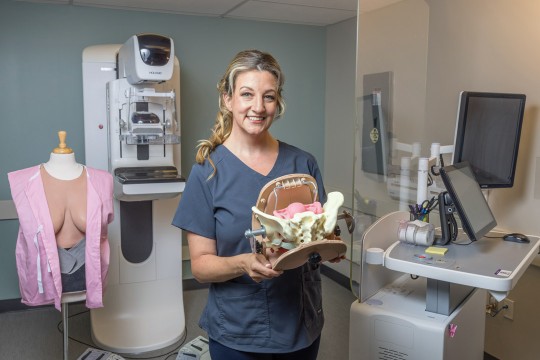
McCarthy develops groundbreaking mammography tool
Mammography screening for breast cancer is recommended for all women over 40 years old in the United States, which is roughly 25 percent of the population. But, when it comes to learning the procedure, there is a lack of simulation tools to help train practitioners.
-
November 12, 2025

RIT student brings the action of ‘Predator: Badlands’ to the streets of Los Angeles
Lucy Ray, a fourth-year medical illustration and psychology dual-degree student, spent her summer working as a contracted artist for Drissi Advertising, working on ads for movies like Predator: Badlands.
-
September 24, 2025
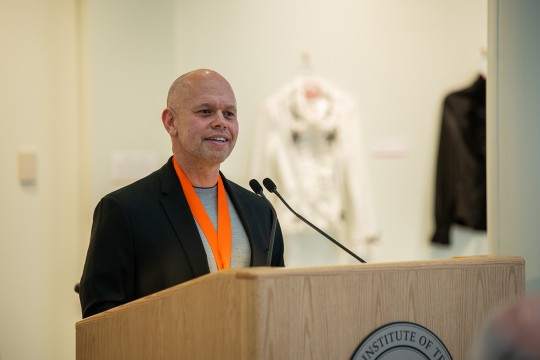
New School of Film and Animation director, faculty roles for 2025-26
Ricky Figueora taking over as the new director of RIT's School of Film and Animation headlines exciting promotions and additions to the College of Art and Design faculty.
Contact

- Craig Foster
- Associate Professor, Art - Medical Illustration and Informatics
- School of Art
- College of Art and Design
- facpgd@rit.edu
School of Art











